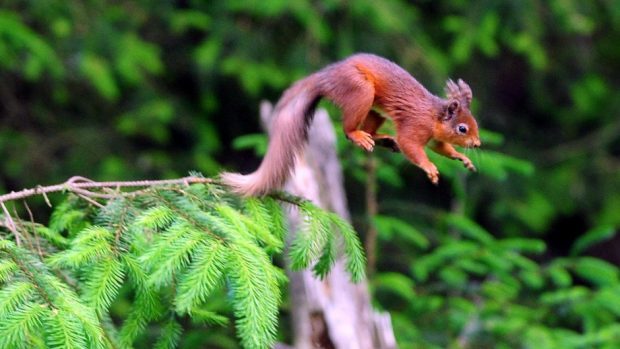They are among the most iconic creatures in the Scottish countryside.
And now, it has emerged that the number of red squirrels is continuing to rise in the north east – especially near Aberdeen.
The much-loved rodents were once a common sight in parks and woodlands. But their populations declined due to the rising numbers of grey squirrels competing with them for food and shelter.
However, the latest report from the Saving Scotland’s Red Squirrels project indicates that the most positive survey results were found in the north east – where red squirrels continue to expand their range – particularly around the Granite City.
Project staff are optimistic that with continued effort, grey squirrels can eventually be completely eradicated from the region and allow the reds to fully recolonise the city.
However, while most of Scotland’s red squirrel populations remain stable, populations in southern Scotland remain under threat.
The team recorded sightings from members of the public and last year counted 725 – the largest amount since their records began in 2010.
Mel Tonkin, SSRS’s project manager, said: “Grey squirrels have continued to spread in some parts of southern Scotland, particularly in the eastern Borders and in the Nithsdale area of Dumfriesshire.
“It is vital that the work we do in priority areas is stepped up to make sure that the red squirrel populations in these areas remain healthy.”
Since 2011, the organisation has been monitoring populations in the parts of the country where red squirrels are most threatened by the spread of non-native greys.
The latter, which were introduced to Britain from North America in the 19th century, out-compete red squirrels for resources, and can also carry squirrelpox – a virus that doesn’t harm them but is deadly to reds.
Red Squirrel Conservation Officer for South West Scotland, Stephanie Johnstone said: “While the region faces considerable challenges, the south of Scotland is still home to healthy red squirrel populations.
“Fortunately there is a lot of community support for the work that we do, and local volunteers and landowners are playing a vital role in efforts to keep grey squirrel numbers low in target areas.”
Squirrel populations are surveyed using feeder boxes placed in the same areas of woodland each spring. When a squirrel visits a feeder box, a sticky tab collects some of its hair, which can then be identified under a microscope.
The 2018 Squirrel Survey report can be viewed at: www.scottishsquirrels.org.uk/publications
